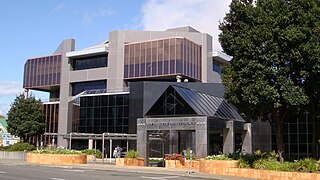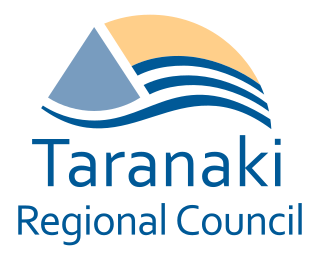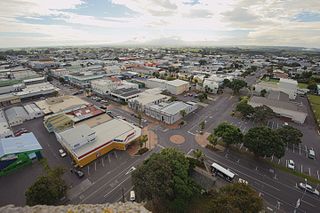| Oakura | |
|---|---|
| Coordinates: 39°7′3″S173°57′16″E / 39.11750°S 173.95444°E | |
| Country | New Zealand |
| Region | Taranaki |
| District | New Plymouth District |
| Population (2013) | |
| • Total | 1,380 |
Oakura is a small township in New Plymouth District, Taranaki, in the western North Island of New Zealand. It is located on State Highway 45, 15 kilometres south-west of New Plymouth. Okato is 12 km further south-west. The Oakura River flows past the town and into the North Taranaki Bight. To the south is the Kaitake Range, part of Egmont National Park. [1] [2]

The New Plymouth District is one of the districts of New Zealand within Taranaki. It includes the city of New Plymouth and smaller towns such as Inglewood, Oakura and Waitara.

Taranaki is a region in the west of New Zealand's North Island, administered by the Taranaki Regional Council. It is named after its main geographical feature, the stratovolcano of Mount Taranaki.

The North Island, also officially named Te Ika-a-Māui, is one of the two main islands of New Zealand, separated from the larger but much less populous South Island by Cook Strait. The island's area is 113,729 square kilometres (43,911 sq mi), making it the world's 14th-largest island. It has a population of 3,749,200.
Contents
- Amenities and Services
- Features and attractions
- Education
- Notable residents
- References
- Further reading
- General historical works
- Clubs and organisations
- Environment
- Māori
- New Zealand Wars
- Maps
- People
- Schools
- External links
The population of Oakura was 1,380 in the 2013 census, an increase of 21 from 2006. [3]
The 2013 New Zealand census was the thirty-third national census. "The National Census Day" used for the census was on Tuesday, 5 March 2013. The population of New Zealand was counted as 4,242,048, – an increase of 214,101 or 5.3% over the 2006 census.
The Oakura Messenger (TOM) is a monthly publication delivered to all letterboxes in the area. It began in October 2000. [4]
On 5 July 2007 the town was hit by a tornado, which damaged 60 houses. [5]
Oakura is well known for its beach—Oakura Beach. One of only three beaches along the west coast of New Zealand which is north facing, in 2007 it became one of the first Blue Flag accredited beaches in Oceania. Only two others—Fitzroy and East End beach in nearby New Plymouth—received the same award that year. As of 2010, Oakura Beach has retained its blue flag status. [6]

The Blue Flag is a certification by the Foundation for Environmental Education (FEE) that a beach, marina, or sustainable boating tourism operator meets its stringent standards.
The Oakura River (and therefore Oakura township itself) was named after the female ancestor Akura-matapū of the Kurahaupō waka. Oakura-matapu was the original name of the river, and it literally means "Belonging to Akura-matapū". Akura was married to Okorotua. Ngāti Tairi hapū holds mana whenua in Oakura. Ngāti Tairi belongs to the larger descent group of Ngā Mahanga a Tairi. Ngāti Tairi and Ngā Māhanga a Tairi are a part of the tribe Taranaki. Ngāti Tairi retain their take ahi-kā (rights of ownership) through the marae Oakura Pā beside the southern side of the Oakura River. People have been living in the area of Oakura for hundreds of years.
When war broke out in 1860, Ngāti Tairi as part of Nga Mahanga and Taranaki joined in the offensives against the British. The nearby Tapuae ridge (north of Oakura) was a continual site of conflict. On 4 May 1863 a party of about 40 Māori warriors ambushed a small military party on a coastal road west of the town, killing nine of the 10 soldiers. The revenge attack on the military party, escorting a British defaulter to New Plymouth for trial, reignited hostilities in the Taranaki War. [7] [8]

The Second Taranaki War is a term used by some historians for the period of hostilities between Māori and the New Zealand Government in the Taranaki district of New Zealand between 1863 and 1866. The term is avoided by some historians, who either describe the conflicts as merely a series of West Coast campaigns that took place between the Taranaki War (1860–1861) and Titokowaru's War (1868–69), or an extension of the First Taranaki War.







